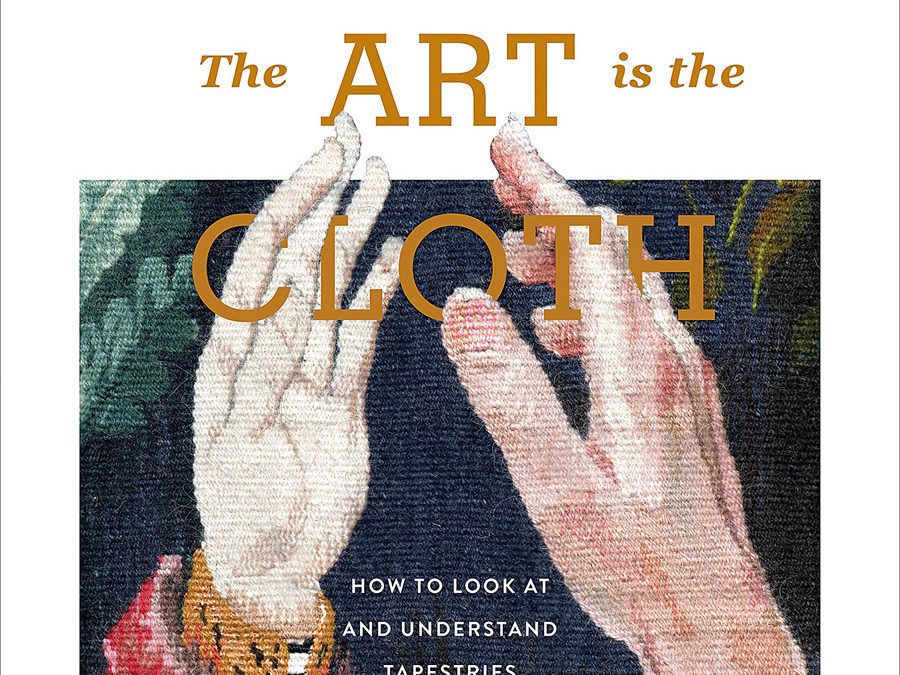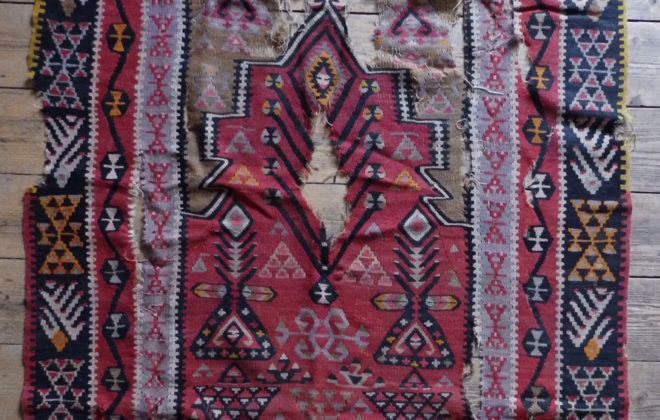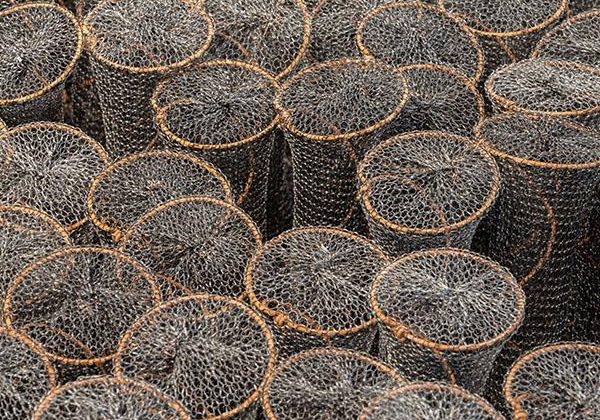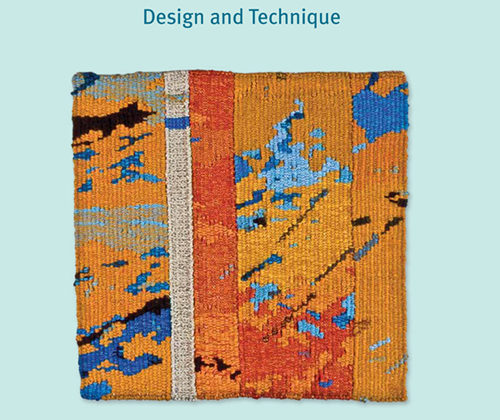The Art is the Cloth
Tapestry weaving has gained a new prominence lately, with quite a few books published on the subject. They range from how-to ones to histories of the medium in general or about a given work, era or workshop. But until now, there haven’t been any that address the subject of Micala Sidore’s new title, The Art is the Cloth – subtitled ‘how to look at and understand tapestries’.
Tapestry weavers will be delighted since often people think what we do is embroidery and that it is a craft. This book is the perfect gift to disabuse the uninitiated of their misconceptions.
In a world where visual literacy is often missing, this book gives us strategies for looking. Many people are nervous in the face of art. If you show your ignorance, you may be laughed at. When I have told someone what I do, the answer can be, ‘Oh, yes, my wife likes that kind of thing’, before a hasty retreat is beaten.
Often books are hyped as being ‘lavishly illustrated’ but The Art is the Cloth is unusually plentiful with photos of over 300 tapestries. The purpose seems to be to let them speak for themselves, with minimal text to nudge the reader into understanding the meaning behind the artist’s work.
Every medium has its strengths, and tapestry’s is the fact that it is a cloth, with possibilities for its manipulation, eg folding, cutting, sewing together, shaping. It can also be layered and textured in numerous ways, and available materials can be juxtaposed to bring out each other’s qualities. Since it also has its own history which is separate from the more mainstream painting, the weaver also has the opportunity to make visual reference to historic examples, whether from classical European tapestry or textiles from any part of the world, whether art or craft. However, those who don’t know tapestry’s history won’t necessarily get the reference, and this book is there to help show the way. The wide variety of techniques, materials, themes and approaches illustrated will in themselves help the reader.
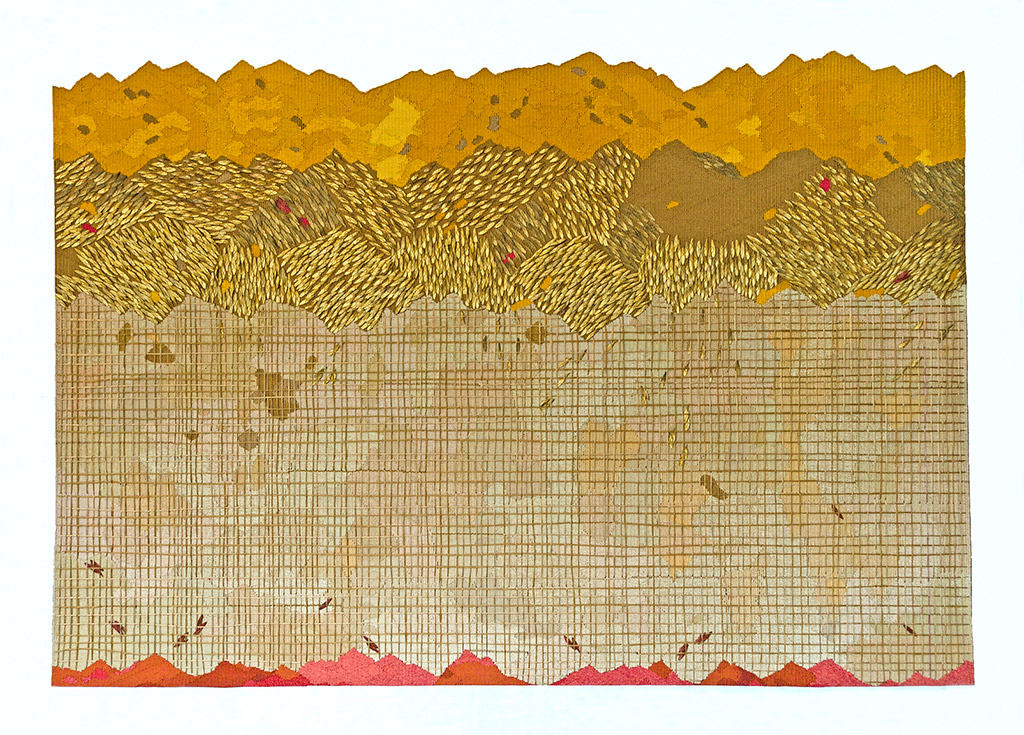
My own tapestry, For Irena Sendler, is illustrated under Special Materials, since I incorporated ash keys (the seeds of the ash tree) into the piece. While other media can in theory use unorthodox materials, it is easier in tapestry since they can be part of the structure or be attached to the surface. The ash keys have a twist to allow them to fall to earth, and that means that light is reflected in different directions as the viewer moves past the work. This is what Micala is saying: cloth has properties that other media don’t have, and here is how to appreciate them.


